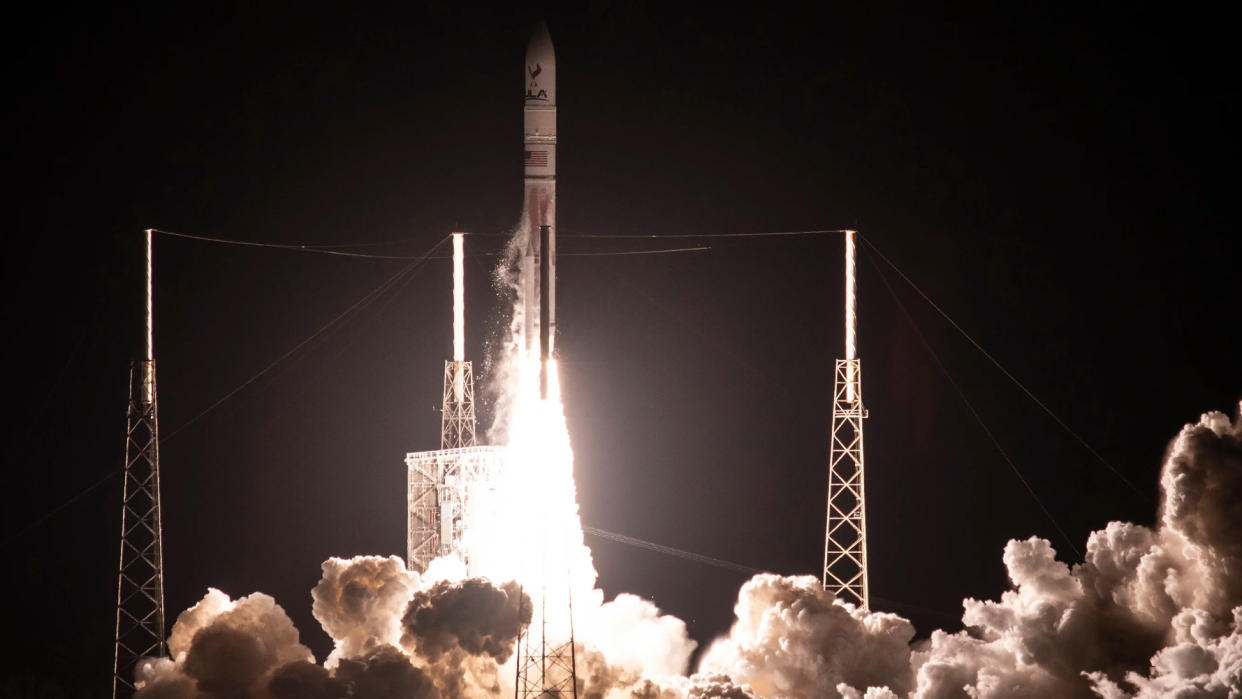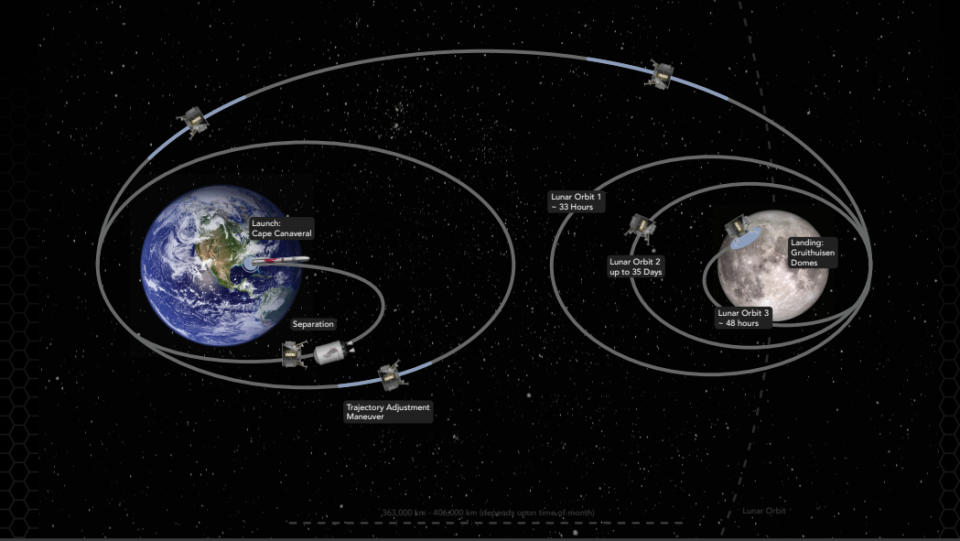Private Peregrine moon lander suffers 'critical' fuel loss after launch, mission at risk

It looks like Astrobotic's Peregrine lander won't win the private moon race.
The spacecraft suffered a serious anomaly in its propulsion system today (Jan. 8), shortly after being deployed into space by United Launch Alliance's (ULA) new Vulcan Centaur rocket. The problem will apparently keep Peregrine from journeying to the moon as planned.
"Unfortunately, it appears the failure within the propulsion system is causing a critical loss of propellant. The team is working to try and stabilize this loss, but given the situation, we have prioritized maximizing the science and data we can capture. We are currently assessing what alternative mission profiles may be feasible at this time," Pittsburgh-based Astrobotic wrote today in an update on X (formerly known as Twitter).
Related: Private Peregrine moon lander suffers anomaly after historic Vulcan rocket launch
Peregrine's launch today was a big moment in spaceflight. It marked the flawless debut of the powerful Vulcan Centaur, which will replace ULA's workhorse Atlas V and Delta rockets. And it opened a new era of private moon exploration — or was supposed to, anyway.
Peregrine flew as part of NASA's Commercial Lunar Payload Services (CLPS) program, which puts agency science payloads on private robotic moon craft. Five NASA payloads were aboard the lander on this flight, including a radiation detector and several spectrometers, one of which was designed to hunt for evidence of subsurface water ice.
NASA thinks that leveraging private spacecraft in this way will allow it to perform a variety of lunar research quickly and cost-effectively, helping the agency prep for crewed missions to the moon under its Artemis program. NASA also hopes that CLPS boosts the capabilities of the American private space sector and stimulates a growing off-Earth economy.
That said, NASA officials have stressed that each CLPS mission is a high-risk, high-reward proposition. No private spacecraft has ever landed successfully on the moon, after all, so some failures along the way are to be expected.
Indeed, the agency seems to be taking Peregrine's current plight in stride.
"Each success and setback are opportunities to learn and grow," Joel Kearns, deputy associate administrator for exploration at NASA's Science Mission Directorate in Washington, said in an emailed statement today. "We will use this lesson to propel our efforts to advance science, exploration and commercial development of the moon."
The NASA experiments aren't the only payloads that Peregrine was supposed to carry to the moon. The lander totes a total of 20 payloads, including Mexico's first lunar probes and a memorial capsule from the space-burial company Celestis.
The memorial capsule's inclusion drew objections from the Navajo Nation, whose president said that depositing human remains on the moon would desecrate a body considered sacred by many Indigenous peoples.

RELATED STORIES:
— NASA responds to Navajo Nation's request to delay private mission placing human remains on the moon
— For Astrobotic, big risk (and bigger reward) ride on private Peregrine moon lander's Jan. 8 launch
— ULA's 1st Vulcan Centaur rocket launch looks spectacular in these photos and videos
Celestis also put a separate memorial payload on Vulcan Centaur's upper stage, which carried it into orbit around the sun. This second payload, called Enterprise, carries a portion of the cremated remains of several "Star Trek" icons, including series creator Gene Roddenberry and his wife Majel Barrett Roddenberry, Nichelle Nichols (who played Uhura) DeForest Kelley (Bones McCoy) and James Doohan (Scotty).
The Enterprise payload also features the DNA of other notable people, including former U.S. presidents George Washington, Dwight Eisenhower, John F. Kennedy, and Ronald Reagan.
The next private moon lander to lift off under NASA's CLPS program is Nova-C, which was built by Houston-based company Intuitive Machines.
Nova-C is scheduled to launch atop a SpaceX Falcon 9 rocket in mid-February and land near the moon's south pole not long afterward.

